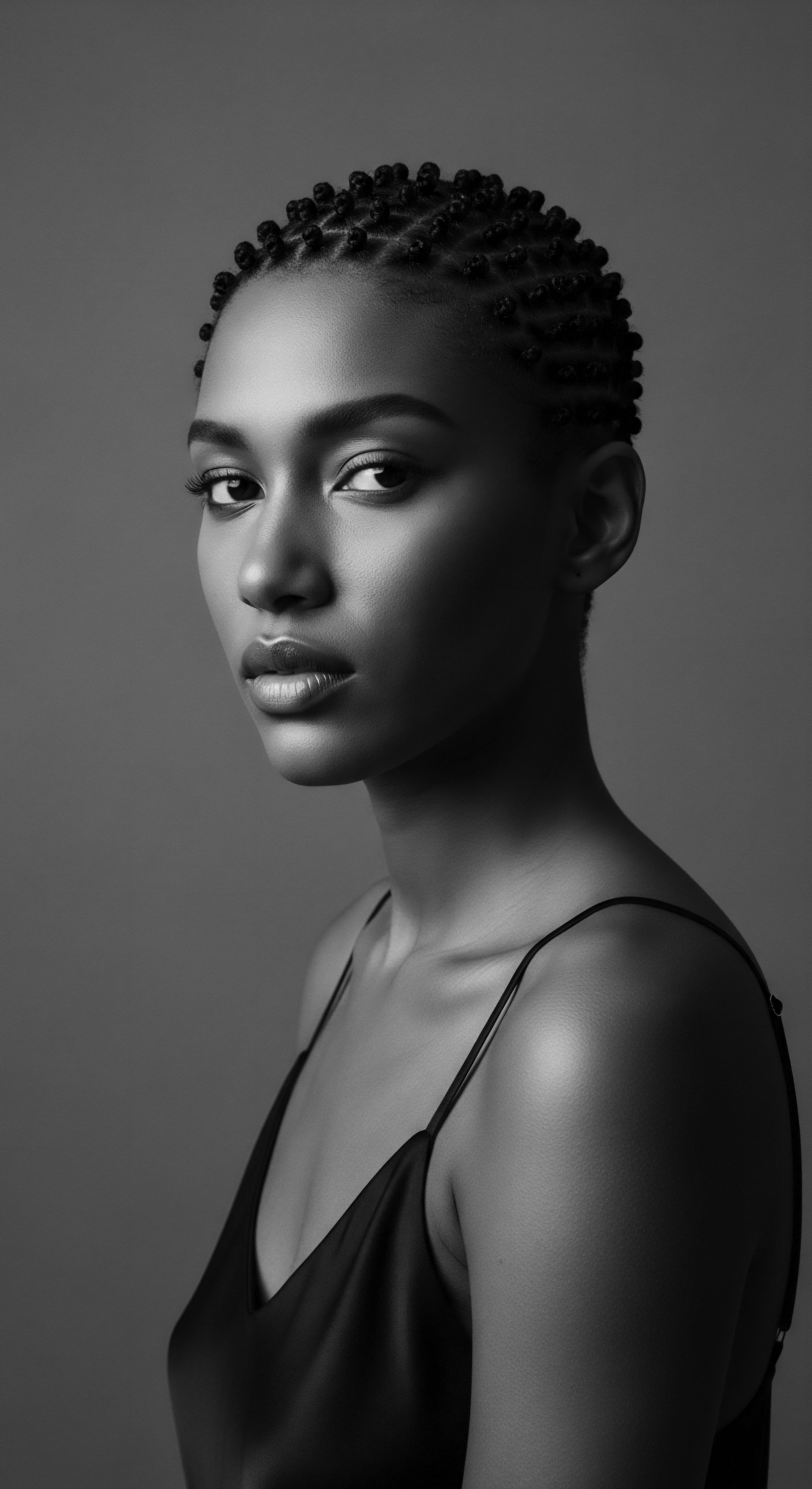
Fundamentals
The outermost layer of each hair strand, the cuticle, acts as a vigilant guardian, a shield woven from overlapping, flattened cells. Within this protective armor resides a less visible yet profoundly significant component ❉ the Cuticle Lipids. These are not merely superficial coatings; they are an intrinsic part of the hair’s architecture, forming a delicate, vital membrane on the surface of the cuticle scales. Their presence is a testament to the hair’s inherent design for resilience, a biological whisper of ancient wisdom encoded within every curl, coil, and wave.
The core purpose of these lipids is to provide a smooth, water-repellent surface, allowing hair strands to glide past one another without friction. This innate slipperiness is paramount for preventing tangles and minimizing mechanical stress, a benefit that resonates deeply within the experience of caring for textured hair. Without a robust lipid layer, the cuticle scales would lift, creating a rough texture that invites snagging and breakage. The hair’s innate flexibility and its capacity to resist environmental aggressors depend heavily on the integrity of this lipid shield.
From the very moment a strand emerges, its surface is endowed with these protective fatty compounds. They are a natural endowment, a biological inheritance that speaks to the hair’s need for defense against the elements and the rigors of daily life. The composition of these lipids is primarily a complex mixture of fatty acids, ceramides, cholesterol, and other waxy substances, meticulously arranged to create a formidable barrier. This arrangement is not random; it is a precisely organized molecular quilt that ensures the hair’s external resilience.
Cuticle Lipids are the hair’s natural, invisible shield, essential for its smoothness, water repellency, and resistance to damage, especially for textured hair.
The ancestral knowledge of hair care, passed down through generations, often centered on practices that intuitively supported the health of these cuticle lipids, even if the precise scientific terminology was unknown. Oiling rituals, the application of natural butters, and the gentle manipulation of hair were all methods that worked in concert to preserve this crucial external layer. These traditions understood, through observation and inherited wisdom, that a smooth, pliable strand was a healthy strand.
Understanding the fundamental contribution of cuticle lipids helps to demystify many traditional hair care practices. It clarifies why certain natural ingredients have been revered for centuries in communities with textured hair. These ingredients, rich in complementary fatty acids and emollients, often provided external support that mirrored the hair’s own lipid composition, enhancing its natural defenses. The recognition of this biological foundation validates the ingenuity of those who came before us, connecting ancient practices with contemporary scientific understanding.
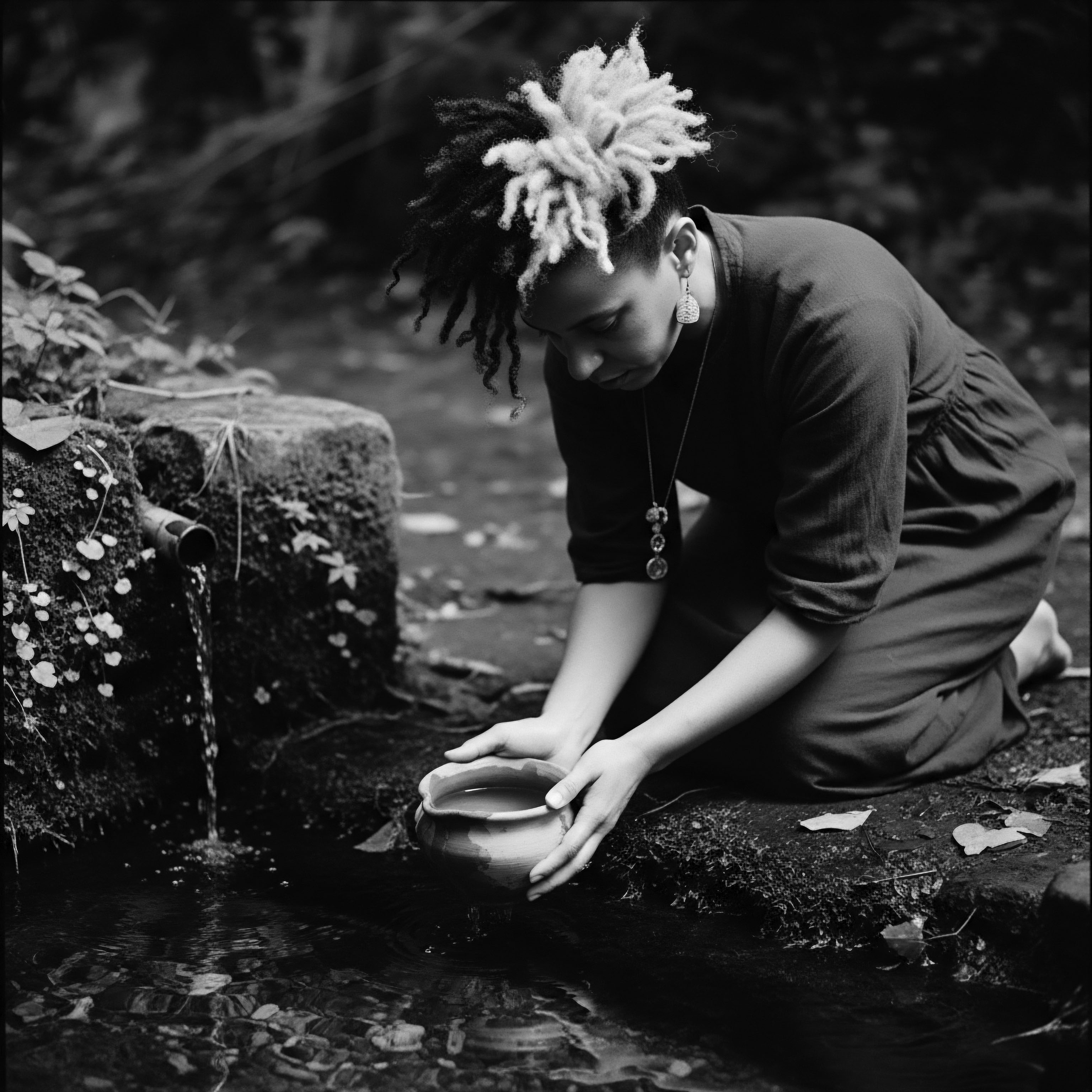
The Lipid Layer’s Elemental Role
At its most basic, the lipid layer on the hair’s surface acts as a selective gatekeeper. It allows beneficial moisture to remain within the hair shaft while deterring excessive water absorption, which can lead to swelling and damage, particularly for porous textured hair. This delicate balance is vital for maintaining the hair’s structural integrity and its ability to retain its natural curl pattern. The lipids contribute to the hair’s natural luster, reflecting light evenly from a smooth surface.
- Hydrophobic Barrier ❉ The lipids repel water, preventing excessive swelling and frizz, a common concern for textured hair.
- Friction Reduction ❉ They provide a lubricated surface, allowing strands to move freely without snagging or causing mechanical stress.
- Cohesion ❉ The lipids help keep the overlapping cuticle scales lying flat, contributing to the hair’s strength and smoothness.
The presence of these lipids also plays a role in the hair’s tactile qualities. A strand rich in its natural lipid endowment feels soft and supple, a sensory experience that has been cherished in many cultural contexts. This feeling of well-being, derived from healthy hair, extends beyond mere aesthetics; it speaks to a deeper connection with one’s physical self and heritage.
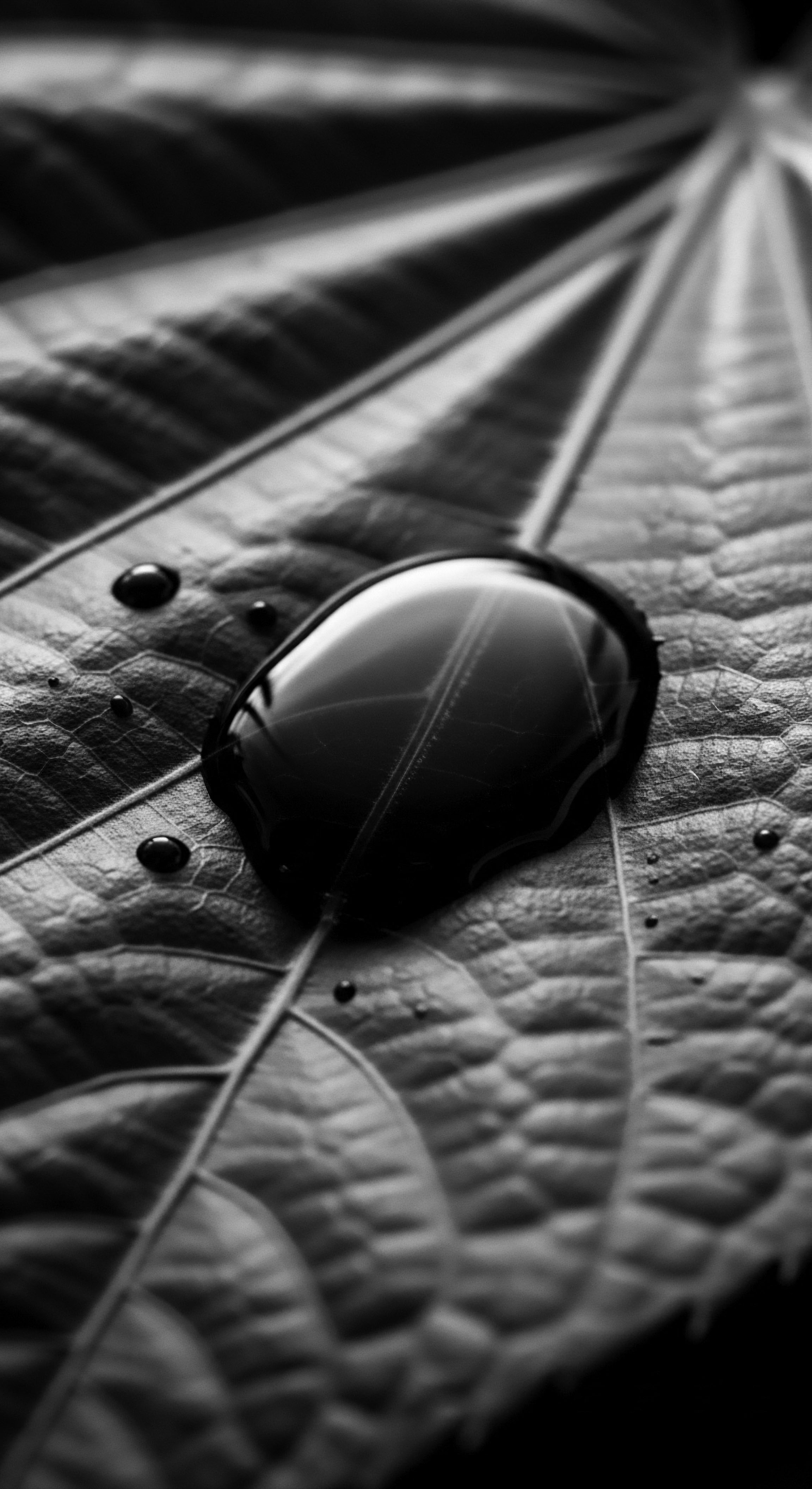
Intermediate
Moving beyond the foundational comprehension, the Cuticle Lipids represent a sophisticated molecular architecture, a testament to nature’s profound design for hair’s endurance. Their composition is a complex blend, predominantly of 18-methyl eicosanoic acid (18-MEA), alongside cholesterol, ceramides, and free fatty acids. This specific arrangement of molecules creates a highly ordered, crystalline-like structure that is integral to the hair’s external protection. This ordered nature is not accidental; it is a finely tuned system designed to perform critical functions under varying environmental conditions and mechanical stresses.
The 18-MEA, a unique fatty acid, is covalently bound to the outermost protein layer of the cuticle. This covalent attachment signifies a strong, enduring bond, making 18-MEA a permanent fixture of the hair’s surface, unlike other lipids that may be more transient. This deep attachment grants the hair its intrinsic hydrophobicity and its ability to resist damage from daily styling and environmental exposure. The significance of this bond becomes particularly apparent when considering the historical and ongoing challenges faced by textured hair, which often experiences greater susceptibility to dryness and breakage due to its structural characteristics and common manipulation practices.
The specific molecular arrangement of Cuticle Lipids, particularly the bound 18-MEA, forms a durable, water-repellent layer vital for textured hair’s resilience.
Traditional hair care rituals across the African diaspora, though not framed in biochemical terms, instinctively sought to preserve this precious lipid layer. The use of natural oils, butters, and emollients was a direct, albeit unarticulated, response to the hair’s need for external lipid support. These practices often involved applying substances rich in fatty acids that could supplement or mimic the natural lipid barrier, thereby mitigating the effects of daily wear and tear. This deep understanding of hair’s needs, passed through generations, underscores the profound connection between ancestral wisdom and contemporary scientific insights.
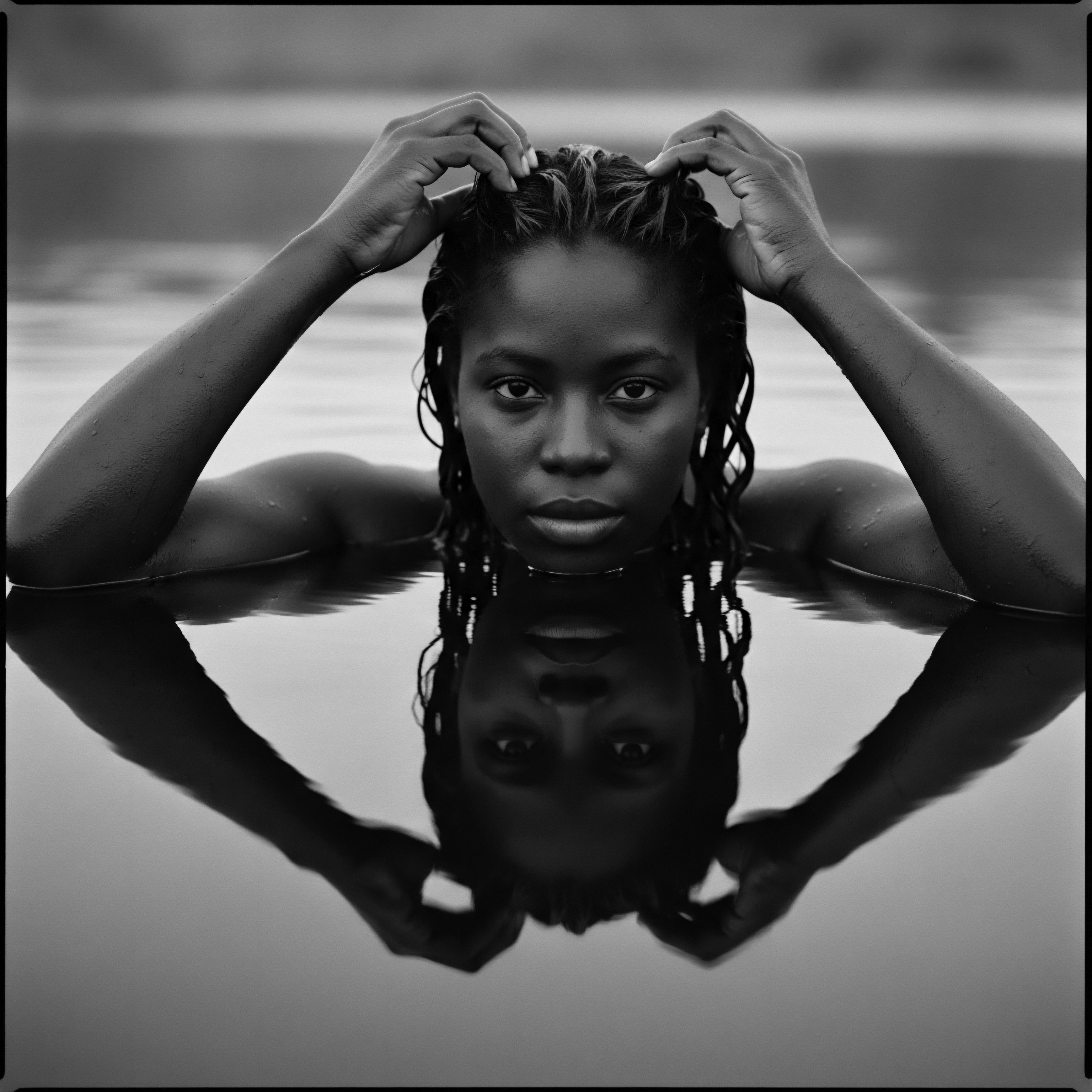
Ancestral Wisdom and Lipid Preservation
Consider the age-old practice of hair oiling or ‘greasing’ the scalp and strands, a ritual observed in numerous African and Afro-diasporic communities. This practice was not merely cosmetic; it was a deeply functional act of preservation. By coating the hair with substances like shea butter, palm oil, or castor oil, these communities were, in effect, creating an external lipid layer that reinforced the hair’s natural defenses. This reinforcement helped to:
- Seal in Moisture ❉ The added lipids reduced the rate of water evaporation from the hair shaft, maintaining its pliability and preventing dryness, which is a particular challenge for textured hair due to its unique coil structure and elevated cuticle scales.
- Reduce Friction ❉ A lubricated surface meant less mechanical stress during detangling, braiding, and styling, thus protecting the delicate cuticle scales from lifting and exposing the inner cortex.
- Enhance Softness ❉ The external lipid layer contributed to the hair’s suppleness and ease of manipulation, making it more manageable for intricate protective styles.
These practices were not based on chemical analyses but on centuries of empirical observation and a profound reverence for hair as a symbol of identity, status, and spiritual connection. The practical knowledge gleaned from these traditions provided an intuitive understanding of how to maintain the hair’s health and appearance, a wisdom that often aligns with modern scientific explanations of cuticle lipid function. The enduring presence of these traditions in contemporary hair care routines speaks to their timeless efficacy.
| Traditional Ingredient Shea Butter (Butyrospermum parkii) |
| Ancestral Application Used as a hair dressing, scalp conditioner, and sealant to soften and protect. |
| Contemporary Lipid Connection Rich in oleic and stearic fatty acids, it supplements the hair's external lipid layer, enhancing hydrophobicity and flexibility. |
| Traditional Ingredient Coconut Oil (Cocos nucifera) |
| Ancestral Application Applied for conditioning, shine, and scalp health, often before washing. |
| Contemporary Lipid Connection Composed of lauric acid, a small fatty acid that can penetrate the hair shaft, reducing protein loss and supporting cuticle integrity. |
| Traditional Ingredient Castor Oil (Ricinus communis) |
| Ancestral Application Valued for thickening hair, promoting growth, and providing a protective sheen. |
| Contemporary Lipid Connection High in ricinoleic acid, a unique fatty acid that provides a thick, protective coating, minimizing cuticle lifting and moisture loss. |
| Traditional Ingredient These ancestral ingredients provided essential lipid support, preserving the hair's natural protective barrier long before its scientific composition was understood. |
The challenges faced by textured hair, such as dryness and fragility, are often exacerbated by damage to the cuticle lipid layer. Chemical treatments, excessive heat styling, and harsh cleansing agents can strip away these vital lipids, leaving the hair vulnerable. Recognizing this vulnerability, ancestral practices leaned into gentle cleansing methods, often involving natural clays or plant-based saponins, followed by generous re-lubrication. This holistic approach ensured that the hair’s natural defenses were respected and replenished, fostering a legacy of healthy, vibrant hair.
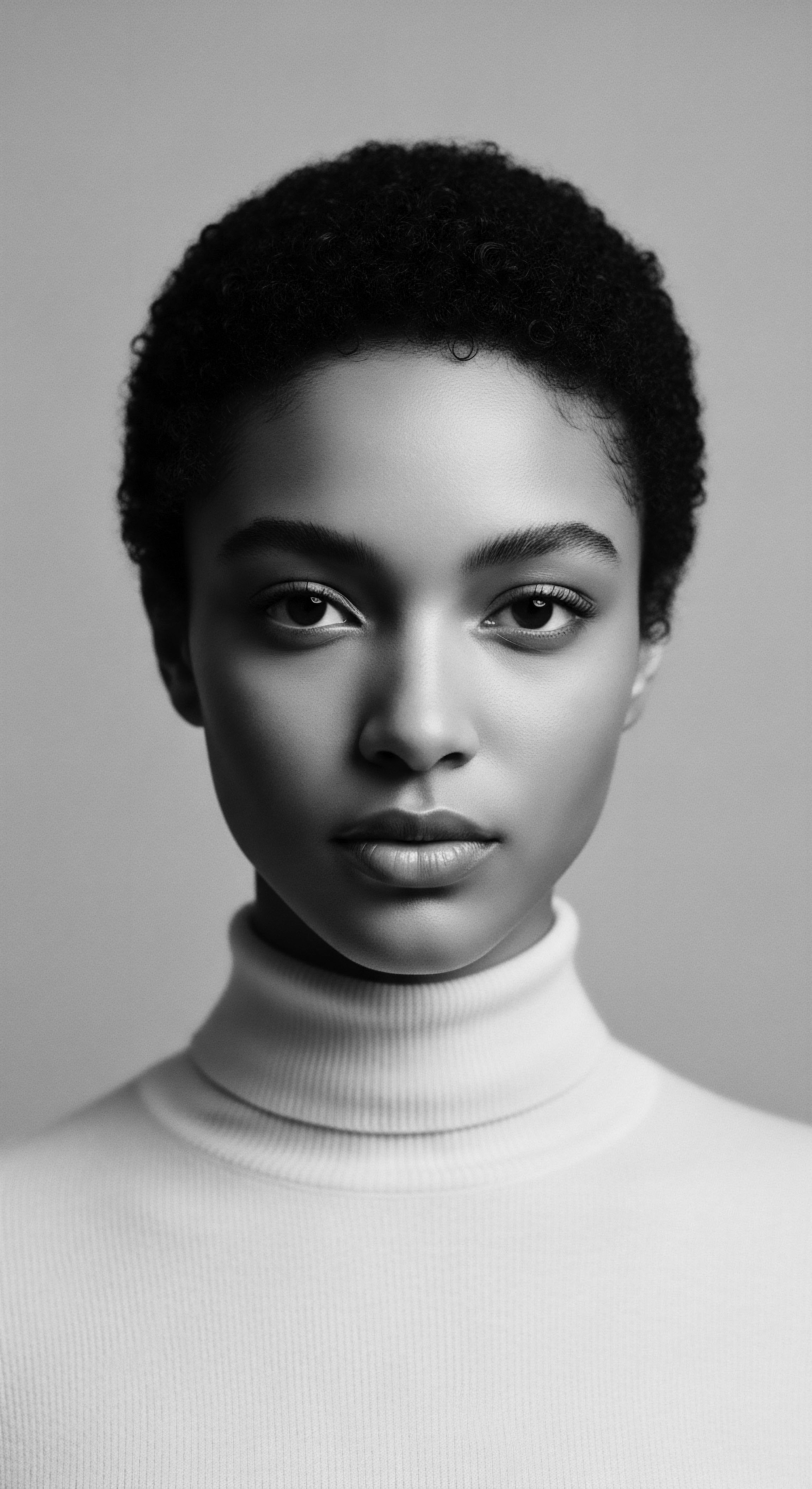
Academic
The academic delineation of Cuticle Lipids positions them as an indispensable component of the hair fiber’s outermost defense system, a complex, ordered assembly of specialized molecules critical for maintaining structural integrity and functional performance. This lipid monolayer, predominantly composed of 18-methyl eicosanoic acid (18-MEA) covalently bound to the exocuticle, alongside adsorbed free lipids such as cholesterol, ceramides, and free fatty acids, forms a hydrophobic surface. This intricate chemical architecture is paramount for mediating interactions between the hair and its environment, governing properties such as wettability, friction, and resistance to chemical and mechanical stressors. The profound significance of these lipids is evidenced by the marked deterioration in hair quality and increased vulnerability to damage when this layer is compromised.
The covalent attachment of 18-MEA to the hair’s surface, through an amide linkage to specific lysine residues on the cuticle proteins, distinguishes it from other surface lipids. This robust chemical bond ensures its relative permanence and integral role in the hair’s native hydrophobicity. The free lipids, while adsorbed and thus more susceptible to removal by solvents or detergents, supplement this bound layer, contributing to the overall lubricity and barrier function. The precise spatial arrangement and intermolecular interactions within this lipid assembly are areas of ongoing research, revealing a highly organized system that confers remarkable resilience to the hair shaft.
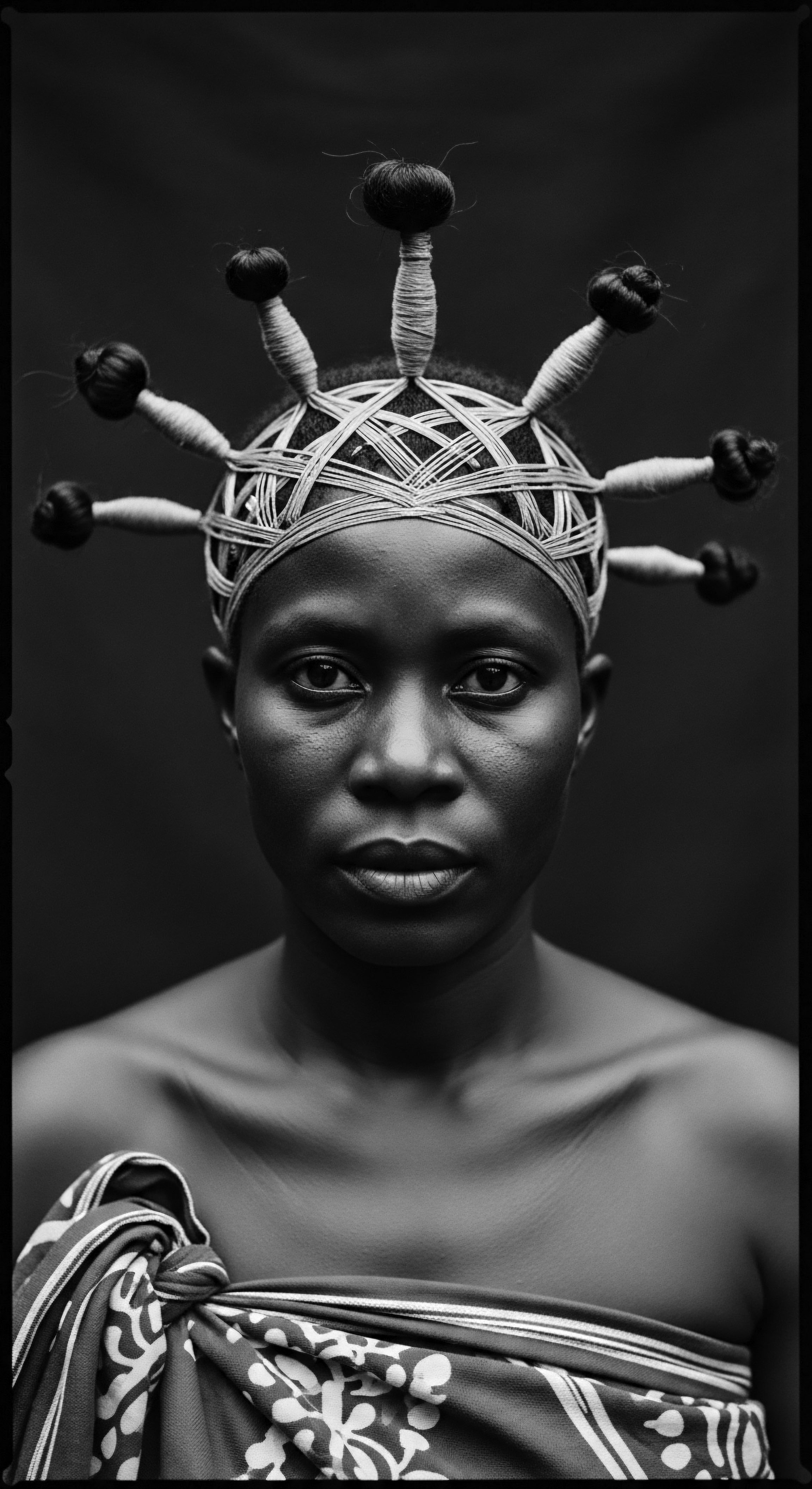
The Legacy of Lipid Preservation in Textured Hair Heritage
For millennia, communities with textured hair have intuitively understood the hair’s need for protection and lubrication, a wisdom deeply embedded in ancestral practices that predated modern chemical analysis. The traditional application of plant-derived lipids and butters, such as Shea Butter (Butyrospermum parkii) in West Africa or Palm Oil (Elaeis guineensis) across various African and Afro-Brazilian traditions, represents an empirically validated strategy for preserving the cuticle lipid layer. These practices were not merely cosmetic but served a critical functional role in mitigating environmental damage and maintaining hair pliability, particularly for hair types prone to dryness and breakage due to their unique morphology.
Consider the historical context of hair care within the African diaspora, where hair was, and remains, a powerful signifier of identity, status, and cultural continuity. The regular application of rich, natural emollients was a cornerstone of these care regimens. This was not a frivolous act but a necessity for managing and protecting hair that, due to its coily and kinky structures, often has a more open cuticle and greater surface area, leading to increased moisture loss and susceptibility to mechanical damage. The ancestral understanding, honed over generations, recognized that a well-lubricated hair surface was less prone to tangling and breakage, preserving the very essence of the hair’s vitality.
Ancestral hair care practices, particularly the use of natural butters and oils, intuitively protected the hair’s cuticle lipid layer, a wisdom now affirmed by scientific understanding.
A powerful illustration of this ancestral ingenuity can be found in the enduring practice of hair oiling and conditioning in various African and Afro-diasporic cultures. For instance, the consistent use of unrefined shea butter, a practice documented across West African societies for centuries, provided a rich source of fatty acids (oleic, stearic, linoleic acids) that would have augmented the hair’s natural lipid barrier. While direct historical measurements of cuticle lipid integrity in ancient hair samples are challenging to obtain, the observable benefits of these practices – reduced breakage, enhanced sheen, and improved manageability – serve as a compelling testament to their efficacy.
A notable study, while not directly on ancient hair, provides scientific validation for the benefits of such lipid-rich applications. Rele and Mohile (2003) demonstrated that applying certain oils, particularly coconut oil, before washing significantly reduced protein loss from hair, suggesting a protective effect on the cuticle. This research, though modern, echoes the efficacy of traditional pre-shampoo oiling rituals prevalent in many cultures, including those of the African diaspora.
The penetration of these plant-derived lipids into the hair shaft, and their ability to coat the surface, provides a physical barrier that minimizes the leaching of internal components and the lifting of cuticle scales, thereby preserving the intrinsic cuticle lipids and preventing external damage. This scientific observation reinforces the wisdom of ancestral practices that prioritized the saturation of hair with natural oils before exposure to water or manipulation.
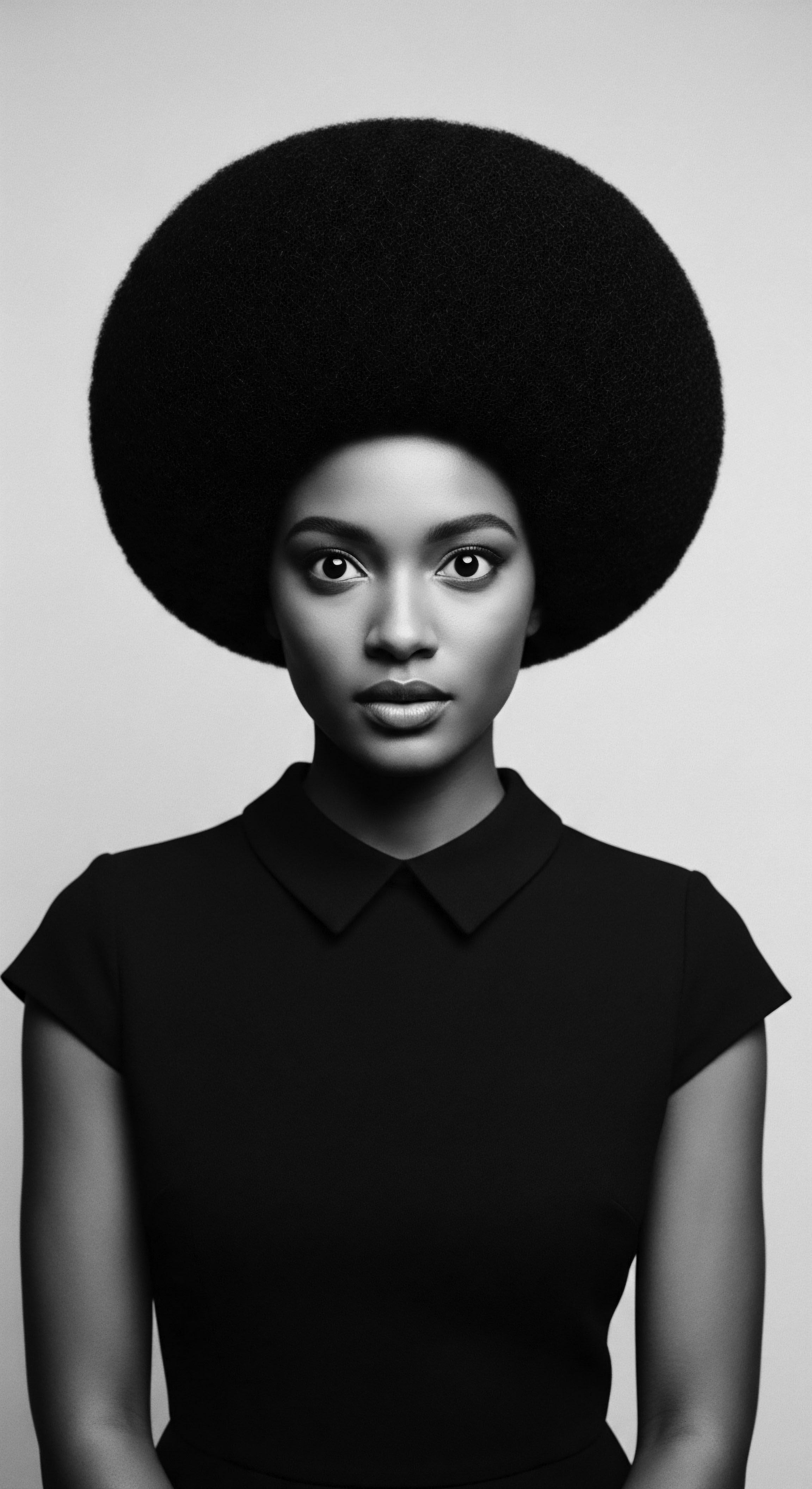
The Interconnectedness of Biology and Cultural Practice
The meaning of cuticle lipids extends beyond mere biochemistry; it intersects profoundly with cultural practices and the lived experiences of individuals with textured hair. The historical denigration of textured hair, often deemed ‘unmanageable’ or ‘unruly’ by Eurocentric beauty standards, inadvertently overlooked the inherent biological requirements of these hair types and the sophisticated care systems developed within their originating cultures. The scientific understanding of cuticle lipids offers a pathway to validate and celebrate these ancestral methods, demonstrating that they were not simply aesthetic choices but deeply functional responses to the hair’s biological needs.
The persistent challenge of moisture retention in textured hair, a direct consequence of its often more open cuticle structure and unique coil pattern, underscores the critical role of cuticle lipids. When this layer is compromised, hair becomes highly susceptible to desiccation, leading to brittleness and breakage. This biological reality has historically necessitated diligent care practices, such as consistent oiling, deep conditioning, and protective styling, all of which indirectly or directly aim to replenish and preserve the hair’s lipid barrier.
From an academic lens, the study of cuticle lipids in textured hair necessitates a multidisciplinary approach, drawing from trichology, biochemistry, anthropology, and cultural studies. It calls for an examination of how historical socioeconomic factors, including the transatlantic slave trade and subsequent systemic oppression, impacted access to traditional hair care ingredients and knowledge, leading to the adoption of practices that sometimes inadvertently harmed the cuticle lipid layer. Understanding this complex interplay provides a more holistic interpretation of textured hair health and its enduring connection to heritage.
- Structural Vulnerability ❉ Textured hair often exhibits a more irregular cuticle surface, which can predispose it to increased friction and lipid loss, necessitating consistent external lipid replenishment.
- Environmental Adaptation ❉ The natural lipid layer provided a crucial defense against harsh climates in ancestral homelands, and its maintenance became a core aspect of survival and beauty.
- Chemical Damage ❉ Modern chemical processes (relaxers, dyes) can severely strip the 18-MEA layer, fundamentally altering the hair’s natural hydrophobicity and demanding intensive lipid-restoring treatments.
The future of textured hair care, informed by a rigorous understanding of cuticle lipids, lies in a harmonious blend of scientific innovation and ancestral reverence. This involves developing products that specifically target the restoration and preservation of this vital lipid layer, while simultaneously honoring and integrating the time-tested practices that have sustained healthy hair for generations. The meaning of cuticle lipids, therefore, extends beyond a chemical definition; it becomes a symbol of resilience, cultural knowledge, and the unbroken lineage of care that binds past, present, and future.
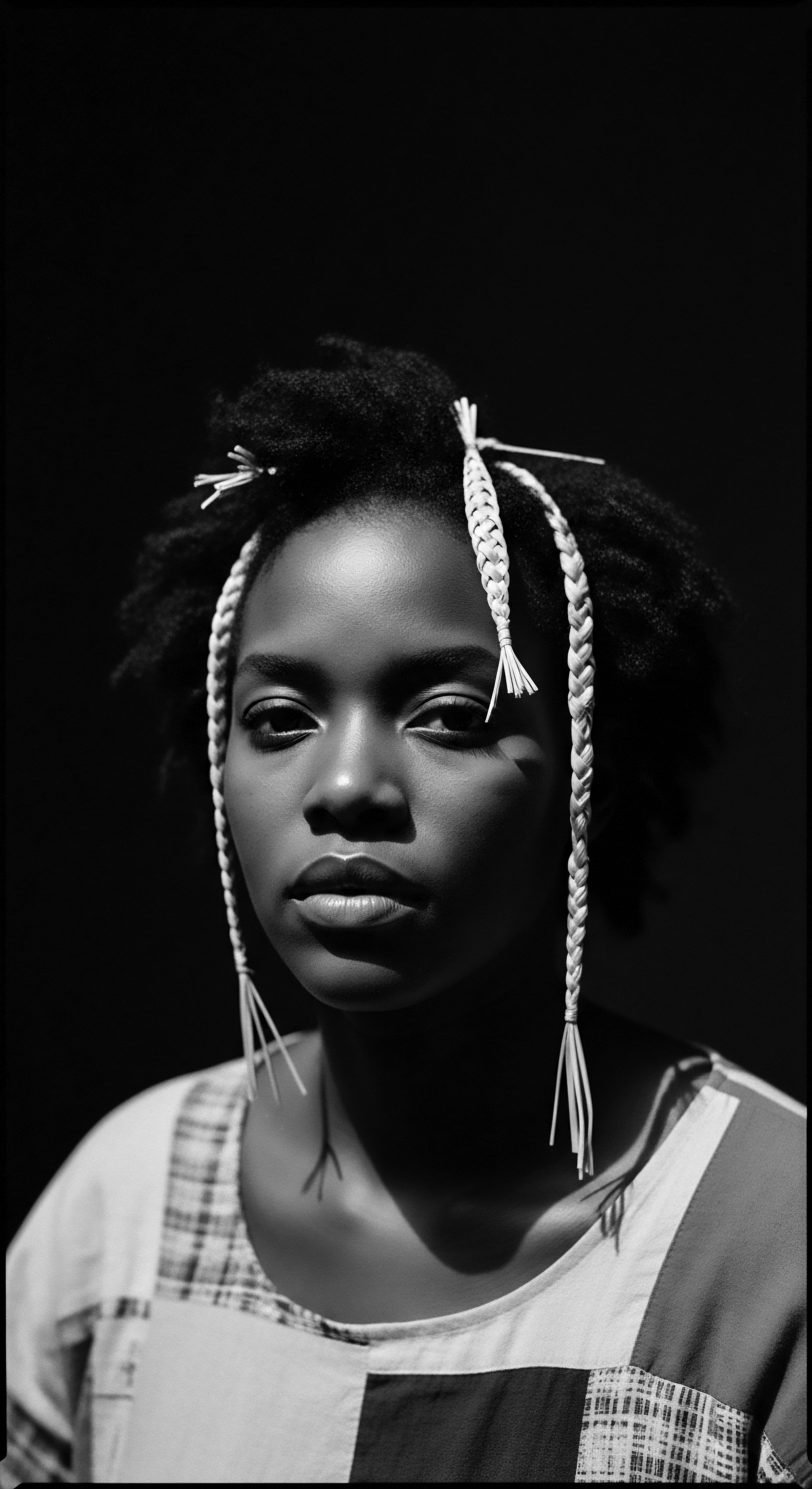
Reflection on the Heritage of Cuticle Lipids
As we conclude our exploration of Cuticle Lipids, a profound sense of continuity emerges, linking the intricate biology of a single hair strand to the sweeping narratives of human heritage. The invisible shield of these lipids, silently guarding the hair’s integrity, mirrors the quiet strength and enduring spirit of those who came before us. For generations, the care of textured hair was a sacred trust, a practice steeped in intuition and observation, long before microscopes revealed the minute architecture of the cuticle. This deep, ancestral wisdom, often expressed through the tender application of plant-derived oils and butters, was, in essence, a sophisticated dialogue with the hair’s inherent needs, a conversation centered on preserving its natural vitality.
The journey of understanding cuticle lipids is not merely a scientific pursuit; it is an act of reclamation. It allows us to recognize the scientific validity within the time-honored rituals of our foremothers and forefathers. Their hands, anointing hair with shea or palm, were unknowingly reinforcing the very lipid structures that modern science now meticulously analyzes. This convergence of ancient practice and contemporary discovery fills us with a deep reverence for the ingenuity that flourished even without laboratories, a testament to the profound connection between humanity and the natural world.
The enduring significance of hair within Black and mixed-race communities, as a canvas for identity, a symbol of resistance, and a repository of memory, is inextricably linked to its physical health. The vitality of the cuticle lipid layer, therefore, is not just a matter of cosmetic appeal but a reflection of a deeper well-being, a testament to resilience passed down through the ages. Each well-cared-for strand carries within it the echo of ancestral hands, the whisper of stories told under starlit skies, and the quiet triumph of heritage preserved.
In the ‘living library’ of Roothea, the definition of cuticle lipids transcends technical explanation. It becomes a celebration of continuity, a bridge connecting the wisdom of the past with the innovations of the present. It reminds us that the quest for healthy, vibrant textured hair is a journey rooted in reverence for our origins, a soulful commitment to honoring the strands that bind us to a rich and unbroken lineage of care. The simple yet profound presence of these lipids within each hair fiber is a constant reminder of the hair’s inherent beauty, its enduring strength, and its profound connection to the Soul of a Strand.
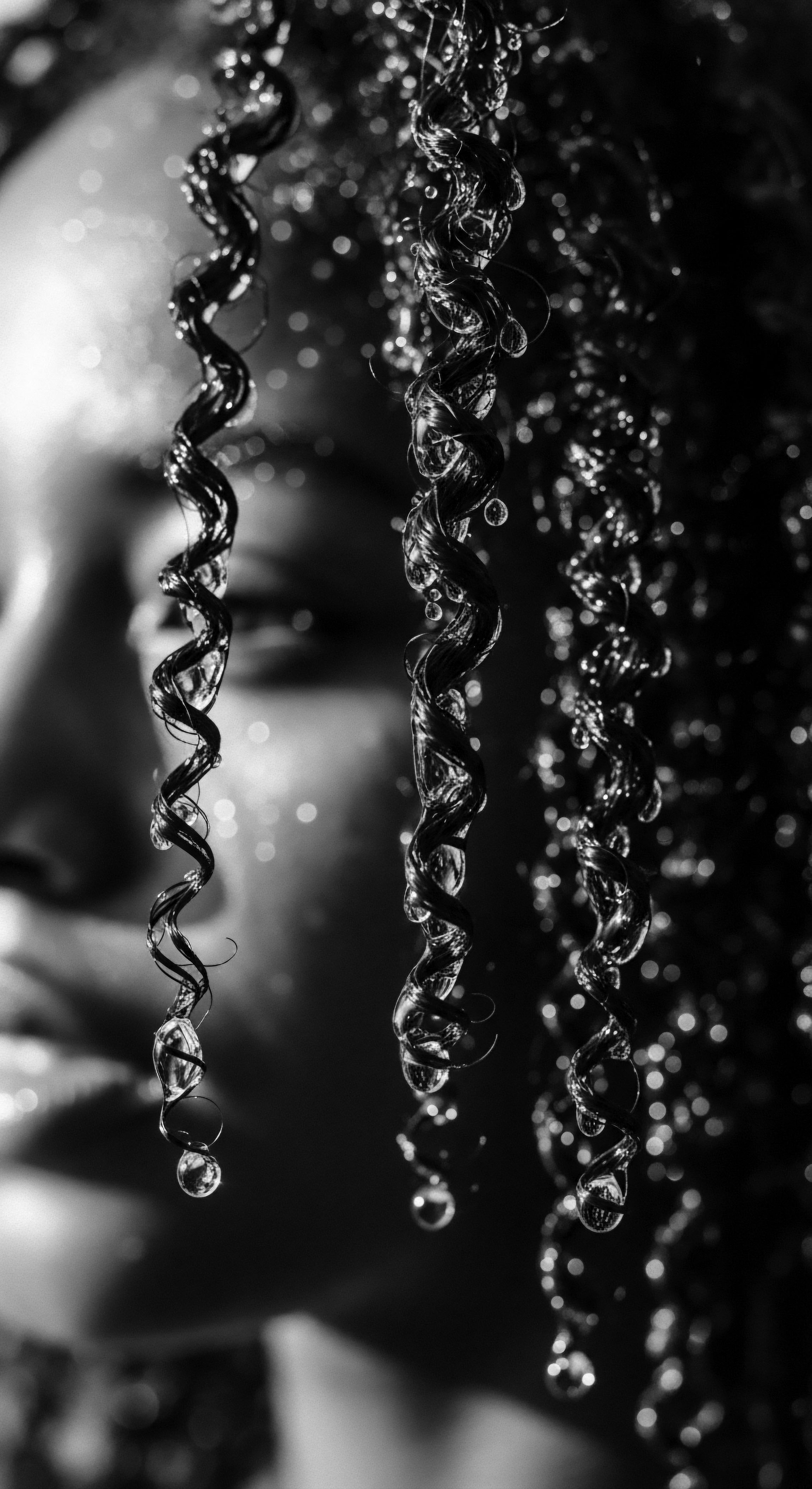
References
- Byrd, A. & Tharps, L. (2001). Hair Story ❉ Untangling the Roots of Black Hair in America. St. Martin’s Press.
- Robbins, C. R. (2012). Chemical and Physical Behavior of Human Hair. Springer.
- Rele, J. S. & Mohile, R. B. (2003). Effect of mineral oil, sunflower oil, and coconut oil on prevention of hair damage. Journal of Cosmetic Science, 54(2), 175-192.
- Draelos, Z. D. (2011). Cosmetic Dermatology ❉ Products and Procedures. Wiley-Blackwell.
- Opoku-Fofie, E. (2020). Hair in African Art and Culture. Yale University Press.
- Branch, M. (2009). Afro-textured Hair ❉ A Cultural History. University of California Press.
- Porter, L. (2018). The Social History of Hair ❉ Culture, Fashion, and Identity. Bloomsbury Academic.
- Gbolahan, A. A. & Olukemi, A. O. (2017). Ethnobotanical Survey of Medicinal Plants Used for Hair Care in Southwestern Nigeria. Journal of Medicinal Plants Studies, 5(5), 261-267.
